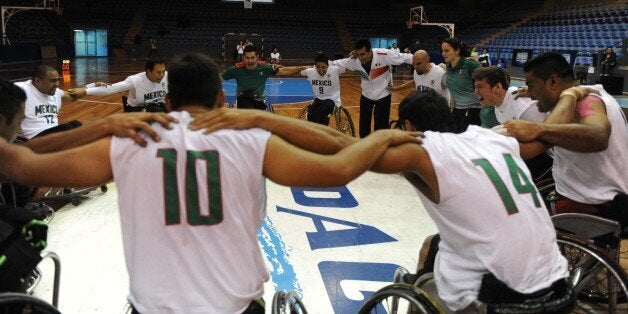
This post is written to recognize and celebrate the International Day of Persons with Disabilities (IDPD) on December 3. The theme of the 2014 IDPD is Sustainable Development: The Promise of Technology.
On any Saturday afternoon in a local park, one can hear children's voices, cheering families, and the occasional referee's whistle. The energetic faces on the field reflect the diversity of changing demographics of today's world. But these fields would have looked quite different not that many years ago.
Sport participation opportunities have evolved over the years. Girls and women have not always had the right to play sports against each other much less compete against boys and men. Advocates continue to work for increased opportunities for girls and women, while recognizing that expanded opportunities may also exist in in mixed gender sports.
Similarly, there was a day when sport in countries like the United States or South Africa was played in black and white, not in terms of television coverage, but in terms of racial segregation. During those times, who could have ever seen into the future where teams would thrive by including and welcoming players from all races. Thinking back, we wonder how segregation like this ever existed in sport and of course we hope it will never exist again. Yet, in some ways, it still does.
Wheelchair basketball. Sitting volleyball. Blind soccer. Sled hockey. Do you think of these sports as only for people with a disability? Or can you imagine everyone playing these sports whether they have a disability or not? Sport, just like other areas of society, can create opportunities for people with and without disabilities to be teammates and/or competitors. This is the future of sport.
The future of sport is going to involve athletes with and without disabilities competing in sports together. Sports traditionally designed for athletes with a disability present a tremendous opportunity to also open up to include all participants -- both those with or without a disability. The future of sport is going to evolve to break down the labels and dissolve the barriers between athletes with and without disabilities. The basketball or track wheelchair will become sports equipment used by all, whether they have a disability or not, rather than assistive devices. These sports will be offered at all levels, from recreational to competitive to elite, and will be attractive offerings in high schools and colleges as intramural, club, and varsity options. This is the future of sport.
Shifts in perception and understanding will reveal that these sports are not only for athletes with a disability, but rather offer challenge, excitement, and enjoyment for all athletes. The future of sport will unite athletes with and without disabilities in a shared movement of sport that allows everyone to compete together on equal terms. These inclusive sports will also encourage innovations in equipment and technology that will facilitate new local, national, and international events and competitions. Children around the world will be requesting sports equipment previously deemed "assistive devices" for the holidays. This is the future of sport.
Embracing this opportunity for athletes with and without disabilities to compete together is the wave of the future. This inclusive mindset will be open to creative thinking and not limited by tradition. It is important to maintain and value the arena and domain of disability-specific competition, yet there is also an untapped platform where athletes with and without disabilities can excel and reach their potential together in integrated sports like wheelchair basketball, sitting volleyball, blind soccer, and sled hockey. These can be sports for all to play whether one has a disability or not. These are sports everyone can play.
The ability to include all athletes can help change attitudes and challenge stereotypes, resulting in a societal shift of how we view athletes with a disability in any realm of sport, just as like the shifts that occurred with gender and race in sport. The frame of athletes with a disability can quickly shift to athlete-centered and athlete-focused. Rather than a perception or view of distance and difference, there can be the discovery of similarity and the recognition that we are all on the same team. This can be revolutionary. As we move closer to the third decade of the 21st century, the time is ready, the time is now. Sport is ready.
--
Eli A. Wolff is the Director of the Inclusive Sports Initiative at the Institute for Human Centered Design and the Co-Director of the Royce Fellowship for Sport and Society at Brown University. Twitter: @eliwolff10
Mary A. Hums is a Professor of Sport Administration at the University of Louisville and Senior Research Fellow for the Inclusive Sports Initiative at the Institute for Human Centered Design. Twitter: @mahums